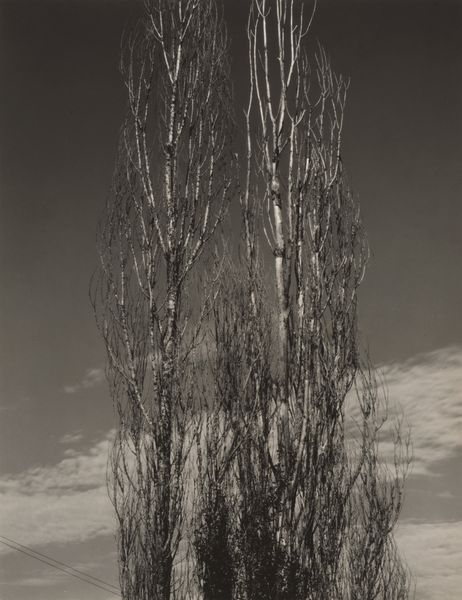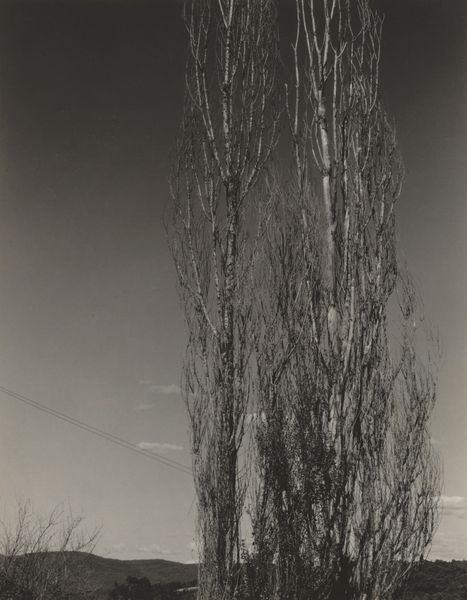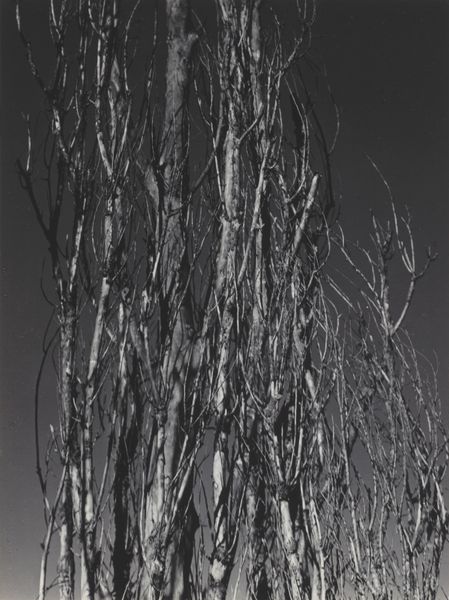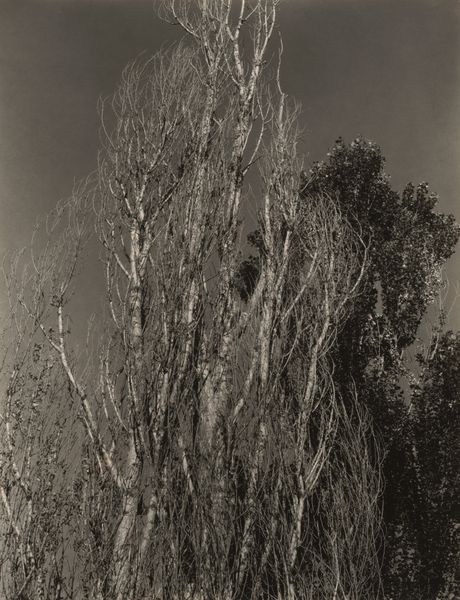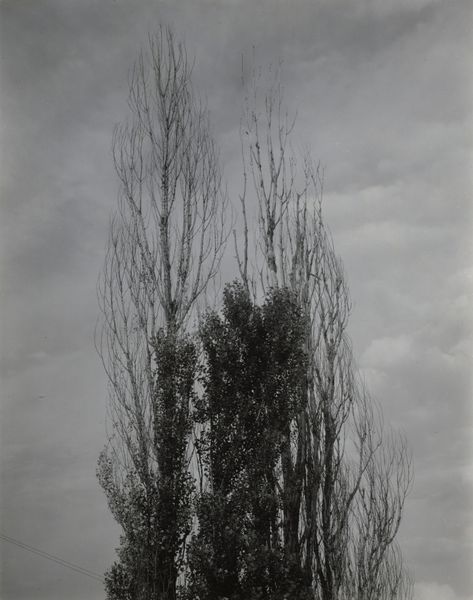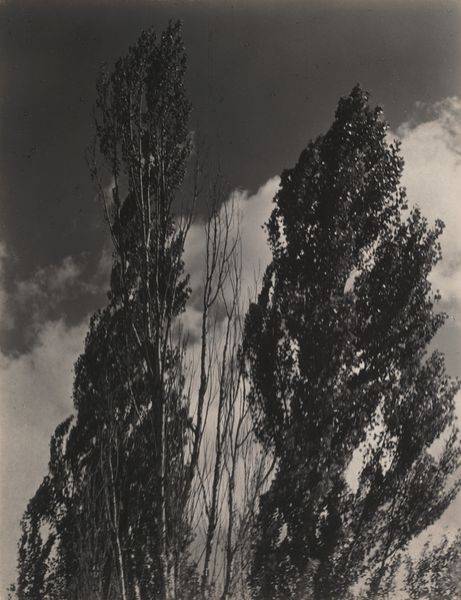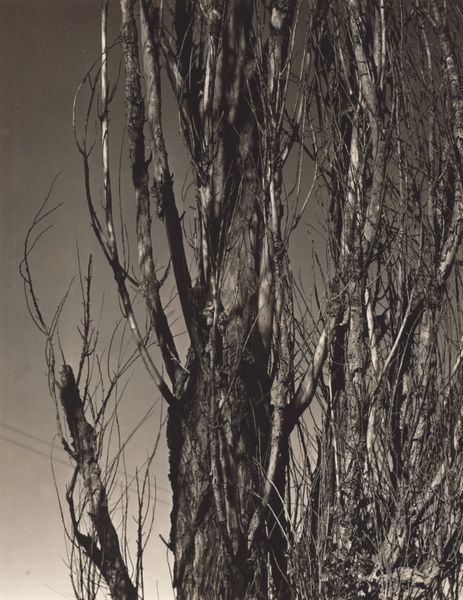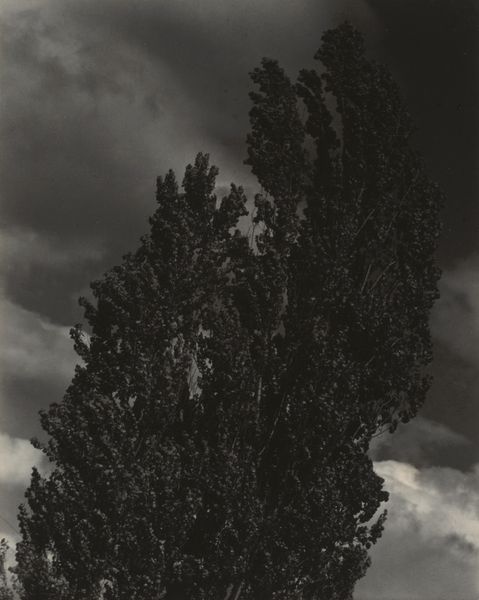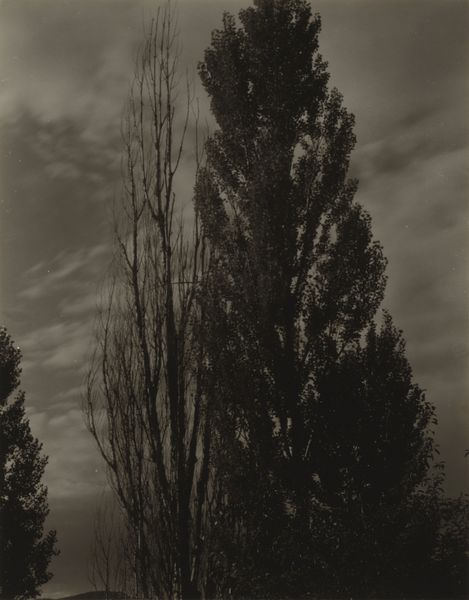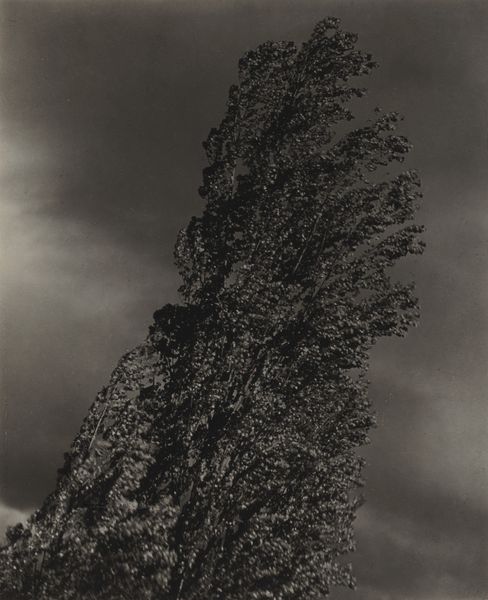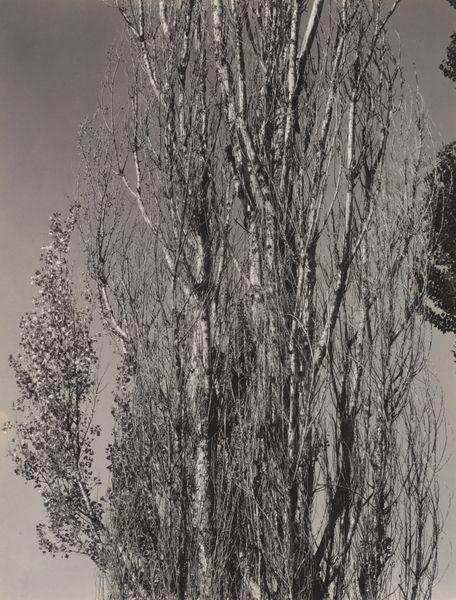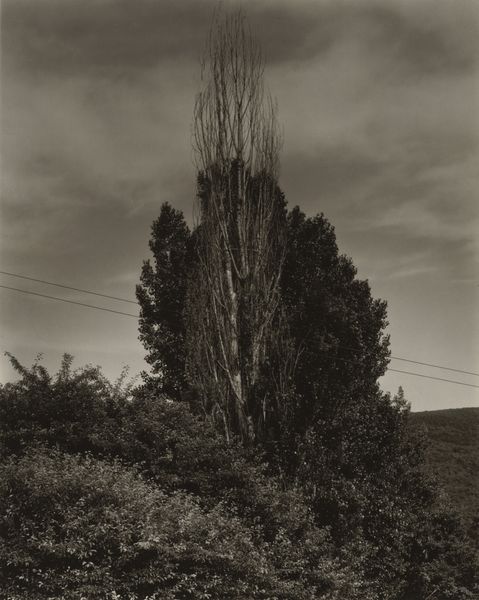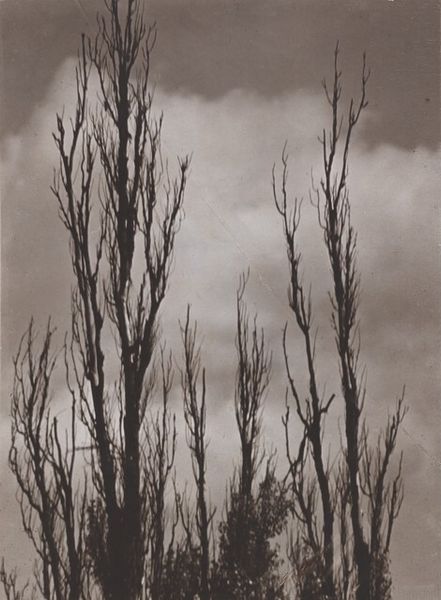
photography, gelatin-silver-print
#
still-life-photography
#
landscape
#
form
#
photography
#
gelatin-silver-print
#
abstraction
#
line
#
modernism
Dimensions: sheet (trimmed to image): 23.1 × 17.8 cm (9 1/8 × 7 in.) mount: 50.6 × 38.7 cm (19 15/16 × 15 1/4 in.)
Copyright: National Gallery of Art: CC0 1.0
Curator: Here we have "The Two Poplars, Lake George," a gelatin silver print made in 1934 by Alfred Stieglitz. Editor: Striking, isn't it? I'm immediately drawn to the stark contrast of those skeletal trees against what looks like a turbulent sky. It's almost gothic in its mood. Curator: Stieglitz's work at Lake George, especially in the 1930s, represents a deliberate return to nature and a kind of visual purity. He’d often use photography as a way to reflect not just the subject, but his own emotional state and often thought of the works at his familial Estate, “The Place,” as a reflection of Americana. Editor: Which makes the near abstraction so intriguing! The trees, those graceful vertical lines, dominate everything. The light seems almost sculpted. Is it me, or does the picture almost breathe? It’s still, but…alive somehow. Curator: Well, Stieglitz certainly believed in photography's ability to capture the essence of life, the "equivalent," as he put it, of his own feelings. But it's also important to consider how his galleries, "291" and An American Place helped shape modernist aesthetics in America. These spaces promoted the idea that photography was as valid of an artistic expression as other “high art” painting or sculpture and displayed all kinds of experimental artwork, sometimes without charging admission or enforcing rules for spectators. Editor: Exactly. This isn’t just documentation; it’s a feeling. Looking at the image, I feel both stillness and something akin to anticipation. What happens next after these quiet trees have endured some meteorological episode. Maybe that’s why it resonated for modern audiences. It still moves me! Curator: And I find myself pondering about how that simple silver gelatin print challenges photography's assumed objectivity. The silver-gelatin is almost a romantic vehicle to transport viewers, from one vantage, back into time. Editor: That it does. I see so much energy simmering beneath that silvery surface. It really encourages one to simply sit and wonder at the natural world and to remember the artistic vision needed to get to it, so to speak.
Comments
No comments
Be the first to comment and join the conversation on the ultimate creative platform.
